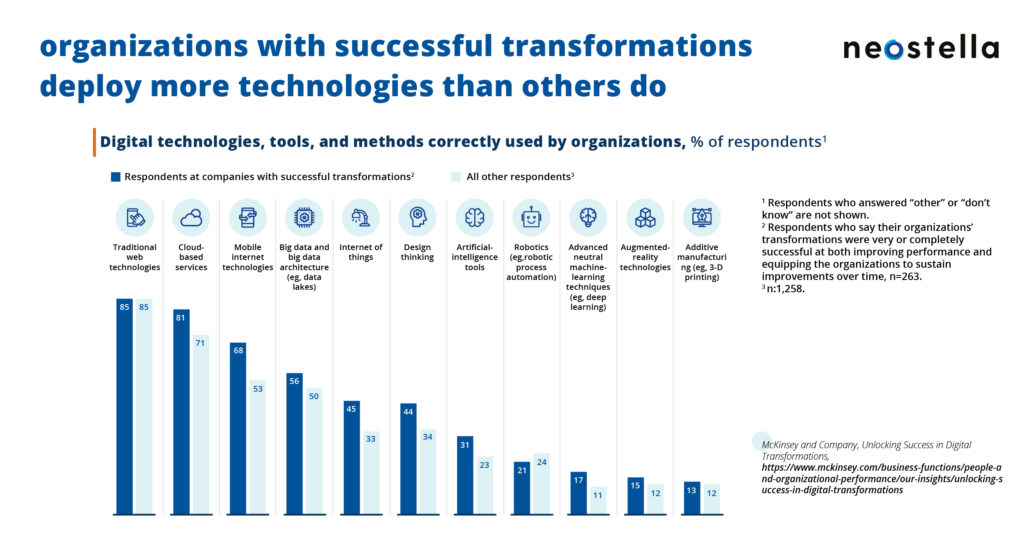Importance of a Clear Hyperautomation Strategy
Learn more about why it’s important to map out a hyperautomation strategy—and how to do so.

These days, automation is ever-present with potential to transform industries like finance and manufacturing, and a surge in popularity with a catch-all phrase that has captured the attention of the digital world.
Hyperautomation is not just a fad; it is the way of the future and organizations cannot afford to ignore it. According to Fabrizio Biscotti, Research Vice President at Gartner:
Hyperautomation has shifted from an option to a condition of survival for businesses. Organizations will require more IT and business process automation as they are forced to accelerate digital transformation plans in a post-COVID-19, digital-first world.”
At the same time, though, organizations would be remiss if they waded blindly into the deep end of hyperautomation waters. Rather, organizations need a clear hyperautomation strategy first to make sure that:
- Business objectives align enterprise-wide
- There is a clear end-goal and vision in mind
- Expectations are realistic
- There is a strategy in place for transparency among teams
Importance of Mapping Out a Hyperautomation Strategy
No matter which way you slice it, it is hard to miss the benefits of automation – as well as the demand to adopt it among organizations.
According to a recent Salesforce survey of 600 CIOs and IT decision-makers, 91% of organizations say that demand for automation from business teams has increased over the last two years.
The same survey predicts that 80% of organizations will have hyperautomation on their technology roadmap by 2024.
What this tells us is that it’s apparent that many organizations are well on their way to implementing or expanding their automation efforts. However, there are still some organizations suffering from automation insecurity either in getting their automations off the ground and running initially or in their attempts to scale. All too often, these organizations end up giving up on automation before unlocking its full potential.
Unfortunately, this is a common symptom of not having a clear vision or roadmap in place. If you’re embarking on a cross-country road trip, you wouldn’t get in the car without an end destination in mind nor would you start driving without a tank full of gas. In the context of hyperautomation, the end destination is the metrics or ROI your organization is looking to obtain and the tank full of gas is the hyperautomation partner and combination of technologies to get you there.
Many voices from senior leadership might understand the value in adopting automation but if they don’t take the time to consider the larger picture, i.e. that automation can go far beyond the paper pushing and data extraction use cases that many companies use the technology for, they miss out on an opportunity to transform holistically.

Getting Started
No matter how dedicated a company is to its digital transformation strategy, if they don’t have the right vision or blueprint to guide them, it will undoubtedly run into issues.
Before jumping in, consider these guidelines for an effective hyperautomation strategy:
- Foster an automation-first culture and mindset among employees: Your employees are the backbone of your organization, so it’s safe to say that if they are not adequately convinced of the importance of digital transformation – or the potential ROI – they will be wary of its implementation.
- Set explicit goals and expectations: Is your end goal to automate an entire process or to streamline certain aspects of it to drive efficiency? Or do you have a specific ROI in mind, such as “I want to reduce the amount of time it takes to complete this task from X to X”? Understanding your end goal is crucial to not just the success of your automations but also to facilitate your relationship with the vendor that is delivering those automations.
- Take the time to identify the right hyperautomation partner: Success depends on a variety of factors but perhaps first and foremost is locating the right vendor or partner. At Neostella, we know that not everything can be automated, which is why partner with the best in the business to fill in any automation gaps. From Workato’s intelligent workflow automation low-code/no-code tools, Work-Relay’s Business Process Management (BPM) solutions, and our expertise with UiPath’s Robotic Process Automation technology, you know you will be in good hands. Whatever partner you do end up choosing, some important factors to consider are pricing, technological capabilities to deliver an automation solution, as well as cultural fit within your organization.
- Factor in potential missteps or organizational inefficiencies: You’ve effectively made a business case for hyperautomation in your organization. Just like anything, though, you might need to try, and try again, before you see the ROI. Because not all automation strategies are equal, your organization will adjust the strategy accordingly.
- Account for monitoring hyperautomation efforts with a structured team: Siloed or fragmented teams can disrupt your automations, which is why it’s so important to stay organized and develop a solid internal framework for automation maintenance. Not knowing who is accountable for what or responsible for monitoring automations after deployment can make or break the success of your automations.
- Consider strategies for scaling: All too often, an organization might think their work is done once they have deployed automation technology, which might be why 70% of digital transformation initiatives end up failing. Having a plan in place to scale your automations is just as important as doing the legwork upfront.
Paving the Way Forward
According to McKinsey and Company, organizations with successful transformations deploy more technologies than others do — and at the core of hyperautomation is the intersection of different technologies working in tandem.
At the same time, though, implementing it is a delicate balancing act between which combination of technologies are appropriate for your organization and ensuring you have a good foundation in place for success.
